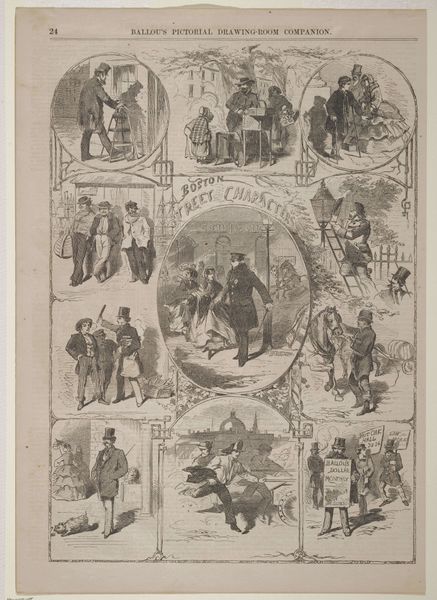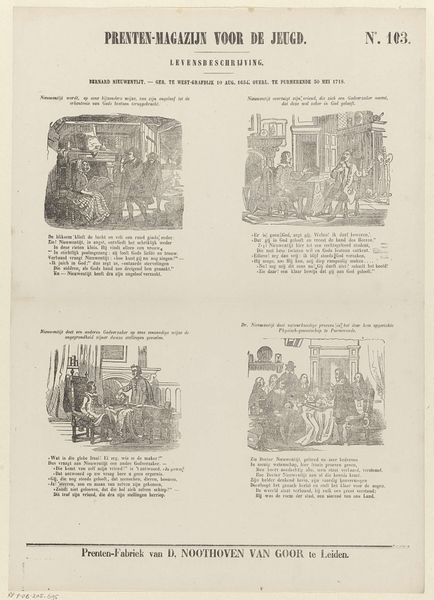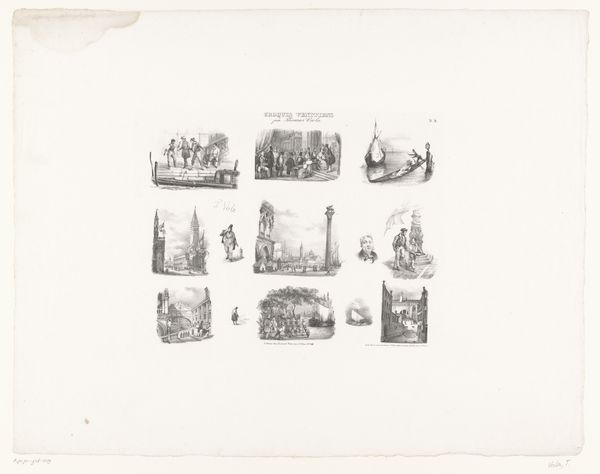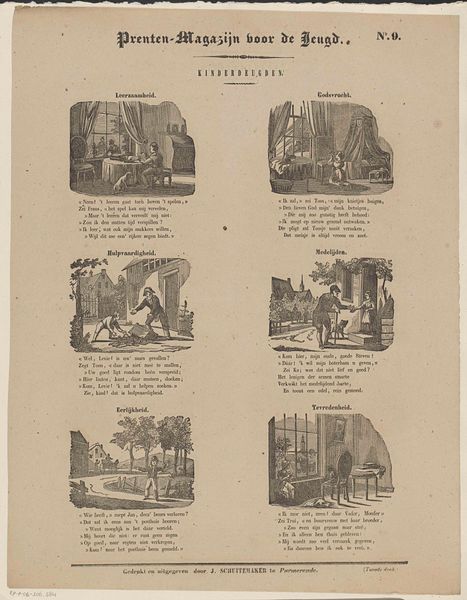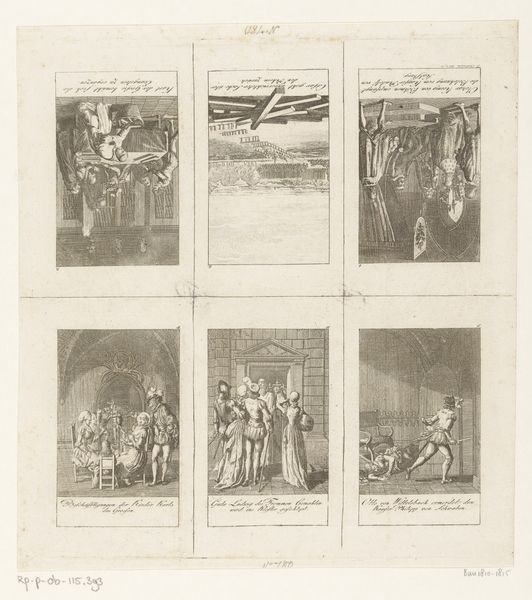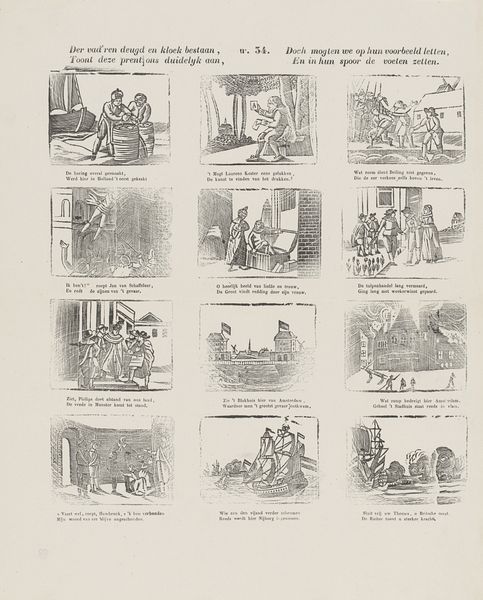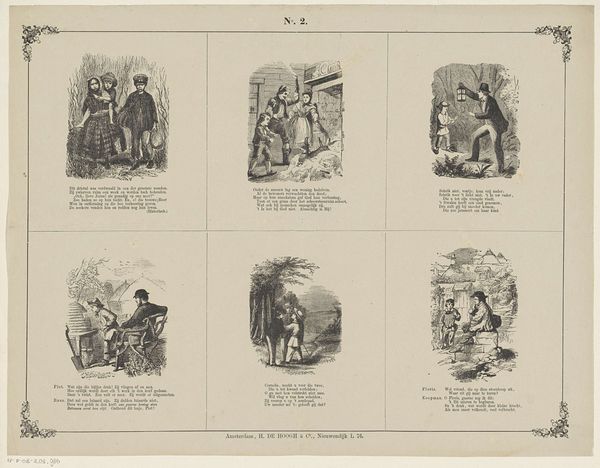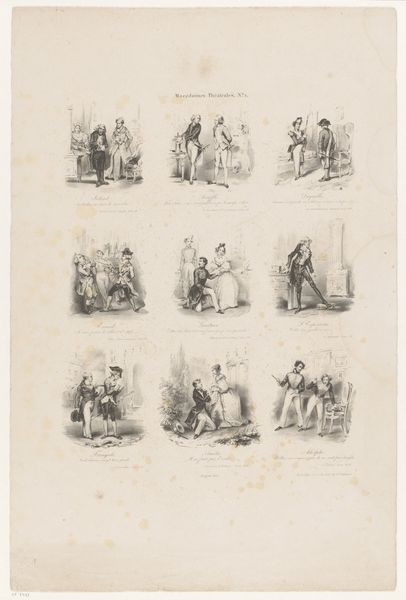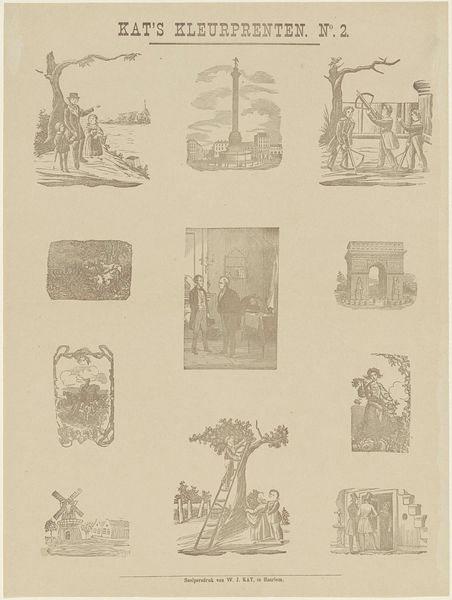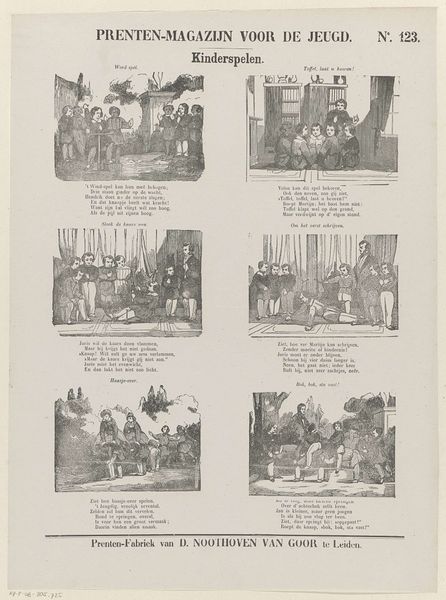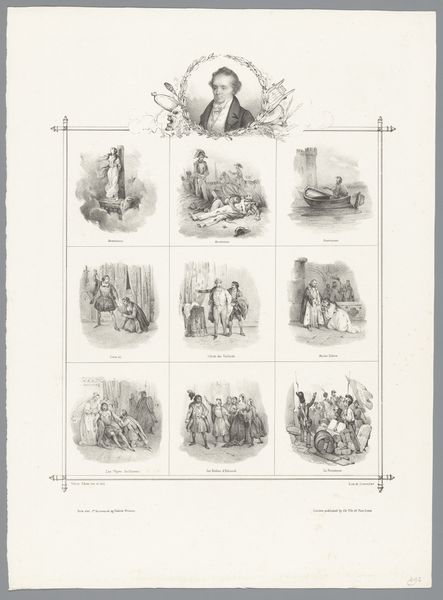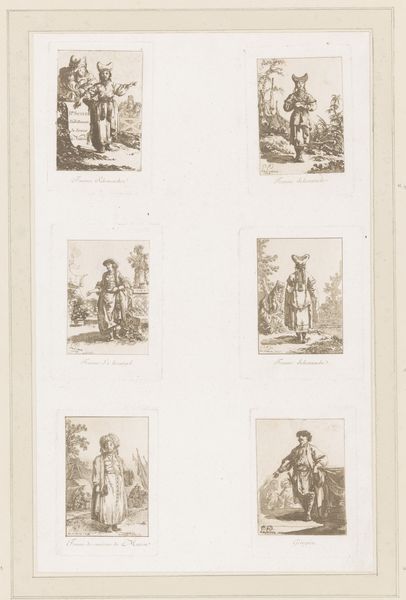
print, engraving
#
portrait
# print
#
costume
#
history-painting
#
engraving
Dimensions: height 550 mm, width 402 mm
Copyright: Rijks Museum: Open Domain
Curator: Here we have “Kleding van het Nederlandse koningshuis” or “Clothing of the Dutch Royal Family”, a print that spans from 1827 to 1907. It resides here at the Rijksmuseum. Editor: Wow, a royal catalogue. At first glance, it feels very official and yet quite... stiff. Like looking at a really formal family photo album printed as an inventory sheet! Curator: That’s a good observation. Each framed vignette gives us a glimpse into royal fashion. It’s an engraving, so think about the labor and skill involved in etching each line to capture the details of these outfits. The material culture is all here; fashion as a social statement, class definition, and more. Editor: It is interesting how the attire dictates bearing. You almost feel sorry for the material on those people – each figure feels entombed by textile. Though, thinking of material and production—prints like this were distributed widely. Did ordinary Dutch citizens view these and, if so, how did their own clothes compare to those on display here? It seems as though the intent here would be to display clear superiority. Curator: Absolutely. And that contrast, the accessibility of the print versus the inaccessibility of royal life, that's part of the magic or rather the calculation. This engraving highlights not only what was worn but what power looked like. The stiff poses, the grand backdrops even on these miniature scales...it all constructs an image of authority. There’s something almost fragile about such an elaborate construction too. What do you see that hints to that frailty? Editor: Maybe it's the medium. Engravings are so delicate in a way. All of these carefully etched lines trying to contain something much bigger—the entire notion of a monarchy! It gives the power structures a sense of…arbitrariness. They become as real or unreal as the etchings themselves, based entirely on illusion. What I keep circling back to is who was buying and looking at this when. Curator: Me too. I see this not just as clothing catalog but as a time capsule, hinting to complex desires and dreams from eras now gone. The tangible texture of longing seems almost stitched into the fabric of these royals, which renders the work incredibly ghostly. The ephemerality here hints to much bigger historical tides that may not yet be fully seen, but soon shall come. Editor: It all makes one ponder the relationship between clothing, identity, and power... or perhaps even the ways in which cloth is the most concrete part of it all.
Comments
No comments
Be the first to comment and join the conversation on the ultimate creative platform.
